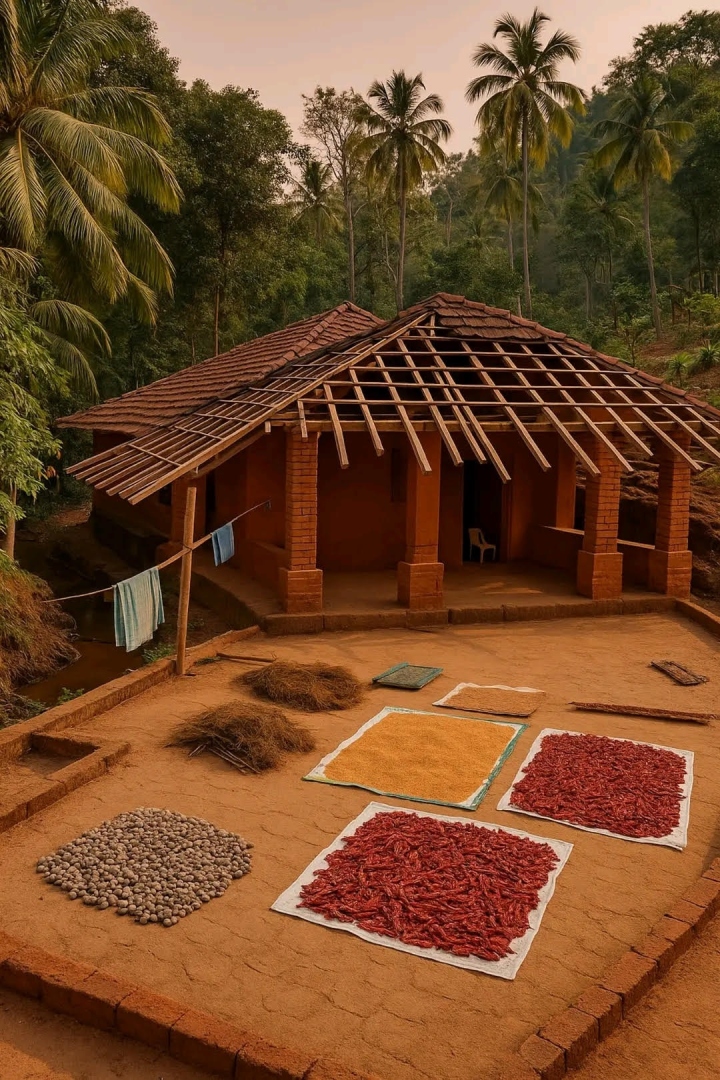
I remember an interesting episode occurred during my initial career in service while being posted at Canacona in the year 1988-89 while travelling from Vasco da Gama. Although Canacona was the southernmost taluka in the State of Goa, working experience here was quite nice since. Everyone was friendly and the local farmers used to call upon agriculture officials for any of their requirements. We used to travel with our staff in the office jeep to interiors places like Gavdongari, Khotigao, Shristhal, Poinguinim, Loliem as well as Agonda where there was an agricultural scene.
First look
While working in the office, one day an old man came up to my desk and explained to me that he is a farmer from Khola (Cola) which is a hamlet in Agonda, where the locals cultivate chillies on the hillside, as a source for their livelihood. He then took out these chillies from his bag and placed before me, making me understand their value outside Canacona.
Field visit
In order to gauge the actual potential of these chillies, which at first sight was indeed perfect in all respect for consumption, we told him that it would be more appropriate if a field visit can be organised so that a way forward can be initiated for him and others who are cultivating this crop in their area as a community agro based initiative.
Terrain on ground
So one fine day we visited the said village of Khola where the farmers had gathered knowing fully about my proposed tour that day. We walked the length and breadth of the hillside along with the farmers where the Khola chillies were grown by almost all the households in the available patch of land. The sight was mesmerising one could be able to look at the chillies in green and red shade against the backdrop of the terrain which were primarily grown as a rain fed crop.
Marketing
My deep knowledge on cultivation aspects came handy and we were able to convince the farmers to follow all the proper guidelines and pack it in bags for storage so that it can fetch a higher price at a later stage. Also we impressed upon them the need to do it collectively so that it can be sold as one lot rather than individually to avoid bargaining and falling prey to any middle men who normally tend to take away a big share as their own earning.
Export idea
After our interaction with Bombay Export Agencies, an idea cropped up in my mind about sending a consignment of Khola chillies to the European market. We broached up this novel idea to my farmers group and explained to them that they would be able to sell their produce at a much higher remuneration as compared to local market if they adopt this export path which was unheard during those days by them. We had to show them how it was done for other commodities through pictures and correspondence.
Shipment of chillies
Finally, after all was settled down we were able to send the shipment of Khola chillies to the European market through cargo journey from Bombay Harbour which lasted a fortnight to reach its final destination.
We were also intimated about the due process that is generally followed while exporting any commodities to the foreign countries and if found suitable as per their standard/guidelines, more shipment will be organised soon, for which we have to wait. This was our litmus test and we had to keep our fingers crossed to brace the news that would be conveyed to us at a later stage.
Consignment rejected
After almost a month of the shipment, we got a message saying that the Khola chillies consignment has been rejected by the concerned authorities at the port itself. Furthermore, in their analysis report it was stated that the chillies had traces of excreta on its surfaces and therefore was not fit for consumption as per their report.
Impact of analysis report
When we came to know about the said analysis report, it really did not make any sense to us since everything was done properly and we all were excited about the good news which was expected by us after all the trouble we had taken for the farming community at large. Initially, we did not anticipate about the twist in the story which we had scripted so precisely in good faith.
Then it struck me like a thunderbolt that the only logically explanation to this fiasco must be while drying period.
Normally, the drying was done in the courtyard with a canopy of thatched coconut leaves on top but the ground is smeared with cow dung slurry. Therefore some cow dung slurry must have rubbed on the surface of the chillies as it came out in the said report under the microscopic lenses in their laboratories.
Way forward
It was a lesson learnt the hard way and then the concept of drying on mats came up to avoid any contact with the ground. The farmers understood the need of the hour and shifted their drying process in this manner so as to be able to reap a higher price by taking everything into consideration with regards to marketing acumen which would herald a path breaking experience for all the stakeholders in the near future.
(The writer, former Deputy Director of Agriculture, manages ‘Kamat Securites’ and ‘Agri-Horti Consultancy Services’)